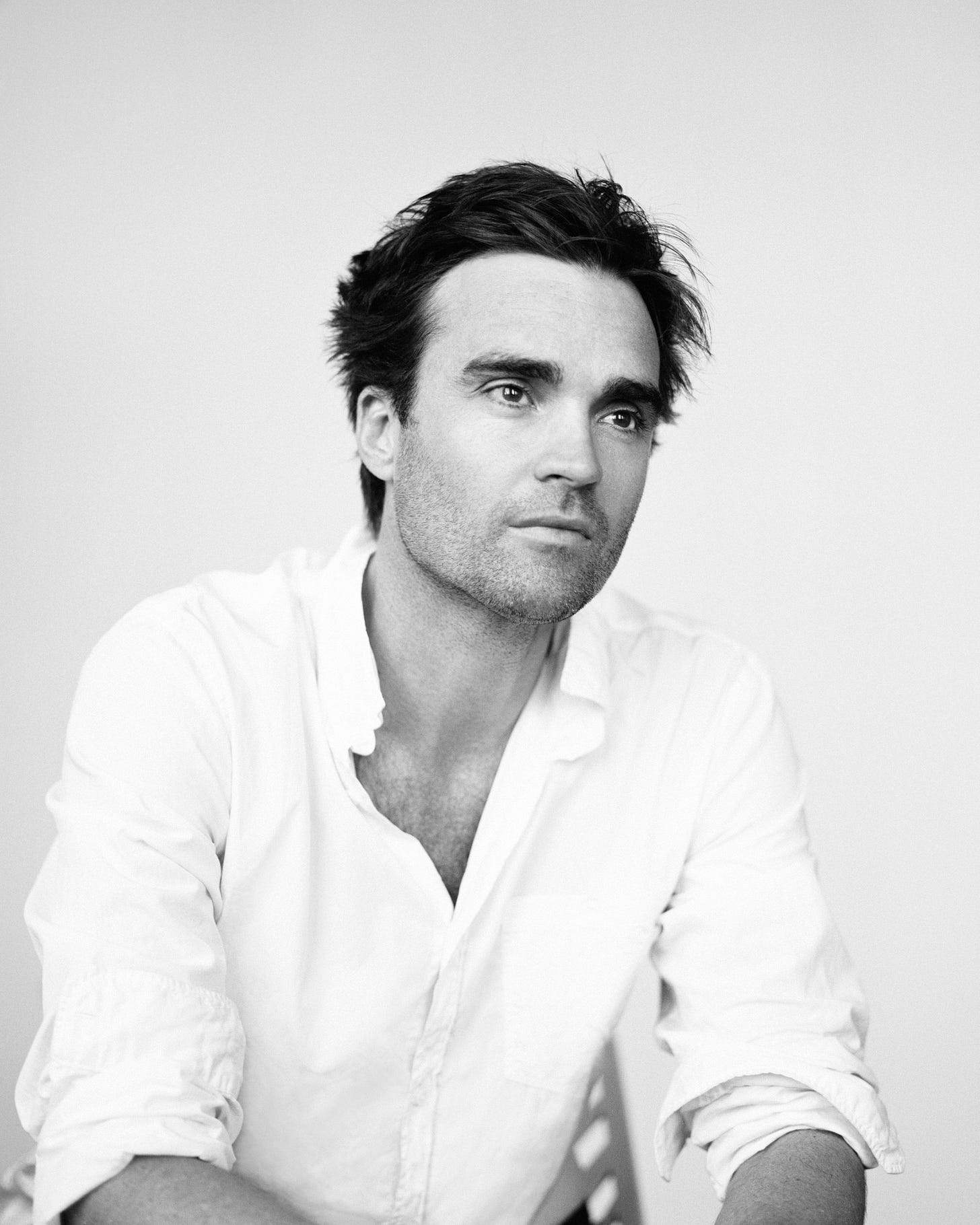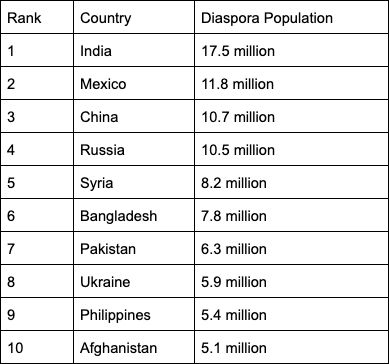⌾Curio #20 - George Byrne, Diaspora & Zoot Woman
Dear readers,
Welcome to the first edition of the year of Curio, the weekly antidote for curious minds looking to briefly escape the noise of the news cycle. I hope you enjoyed some time off with family and friends over the Christmas and New Year. In my experience, this period acts as a small window of collective sanity. The insane news cycle tends to slow down and most people get some time away from work. This is a recipe for happiness. Due to the holidays, I know a lot of you missed the final Curio of 2019 on Arthur Tichborne, English pubs and the Spy From Cairo. You can view it here if that was you.
A couple of thoughts on 2020. First, crossing over to 2020 feels like we’re now officially living in the future. But not the future we once imagined. If twentieth-century science fiction is any guide, by 2020 we thought we were heading towards flying cars, communication by hologram and life on Mars. Instead, we got Twitter, Tinder and TikTok. Although technology has radically changed our lives over the past two decades, particularly the ways we communicate, consume media and work, the physical spaces we inhabit still basically look the same. If someone from the year 2000 travelled in time to now and walked around a major metropolitan city, other than less ski jump haircuts, more athleisure/activewear and smartphones instead of Nokia 3310s, they might not notice an immediate difference. This is because the big societal changes in the past twenty years have been driven by the internet. And you can’t see the internet. By contrast, if someone from 1900 New York travelled in time to 1920, the physical environment would look totally alien. They would have to contend with bizarre and unfamiliar contraptions like cars, air conditioning, plastic, radio, washing machines and hairdryers, as well as buildings taller than they could ever imagine. All of this leads me to wonder: if the last twenty years are any guide, does this mean that 2040 will essentially resemble the world we inhabit now, merely with marginally warmer weather and faster internet?
My second thought about 2020 is what a relief it is to be finally entering a decade (I know not technically, but let’s not split hairs) without an ambiguous name. The years 2010-2019 were awkward because no one knew what to call them. Were they ‘the tens’, ‘the teens’ or ‘the twenty-tens’? All sound clunky and none roll off the tongue quite like ‘the twenties’.
In 2020 the news cycle looks likely to be even crazier than in 2019. I hope you’ll find Curio a valuable break from all the noise. If so, the most helpful thing you can do is forward it to someone you think may also enjoy it and they can sign up below.
Have a great weekend!
Oli
George Byrne’s Love of Californian Light
“With all abstraction, regardless of the medium, the goal is to convey a feeling”

George Byrne - Pink Awning With Orange (2018)
Background & Influence
George Byrne grew up in the inner west of Sydney and is the older brother of famous Hollywood actress Rose Byrne. After graduating from the Sydney College Of The Arts in 2001, he travelled extensively and then settled in Los Angeles in 2011. While in LA he dabbled in acting, including being cast as the main character in a low budget horror film, Afraid (rating of 3.8/10 on IMDB). He’s also a talented musician and signed a publishing deal with MTV and wrote songs for commercials. However, it’s in photography that he has made his mark.

Byrne has a gift for transforming the everyday, banal, urban environment of LA into gorgeous compositions of geometry, pattern and color. With echoes of Modernist abstract art, his photos have a clean simplicity and attractive minimalism. They also add a whimsical quality to the lonely streetscapes. His aesthetic is influenced by painters like Jeffrey Smart and David Hockney, designers from the Bauhaus school and photographers from the New Topographics movement such as Stephen Shore.
Byrne works and exhibits with Olsen Gallery in Sydney, Olsen Gruin in NYC and BAU XI Gallery in Vancouver. His photos are also displayed at Soho House’s permanent collections around the world.
Revealing Hidden Beauty
The following quotes are from interviews of Byrne in IdeelArt Magazine, Surface Magazine, Art Zealous and 10 Magazine.

Blue Awning With Yellow (2017)
“It was moving to Los Angeles…that led me down the path I’m currently on. The landscape here stuck a chord with me in a big way, as soon as I got here I could literally just see all these pictures that I wanted to take, it was as if they were all being served up on a platter. I was (and still am) completely fascinated with the place. Through lots of trial & error (and driving) I was able to piece together a series that seems to keep on evolving.”

East Hollywood Carpark (2016)
“I do love the chalky softness of pastels, I love that those colours are married to the sun. I enjoy experimenting with the alchemy between colours, it’s magic.”

Do Not Enter (2019)
“Basically, to take the pictures, I spend a lot of time analyzing the world around me, looking for interesting interactions (or alchemy), between color, shadow, shape and texture. In a typical city landscape, with seasons and the sun shifting overhead, you have ever-changing conditions. This means a scene you may drive past at 9:00am will look completely different at 4:00pm. Colors soften and cool and shadows may creep in. Some pictures I take are only accessible for a 10-minute window on a particular day of a particular month. So the best thing to do is to keep moving and keep looking.”
Post Truth
For a 2019 exhibition called Post Truth, Byrne embraced another medium: collage. He spliced and diced his images into compositions like the one below.

Post Truth (2018)
“The decision to push the photographs further into collage came about very gradually through trial and error. I began using post-production techniques to modify my images a few years ago, but one day, while working on a particular photo, I accidentally blended two completely different images together… and it was a bit of a light bulb moment. It really opened up so many possibilities and enabled me to be more expressive with the work I was creating. It freed me to employ a completely different approach to image making.”
On Californian Light
“A lot gets written about Californian light and it’s all true. It’s uncanny. If the Australian sun bites, Californian sun kisses. It’s also the colour of gold and lands on you with gentle persuasion, hope and possibility. It’s magnificent and I need it.”

Blue on Blue #2 (2014)
Diaspora Populations
I am just one of more than 270 million people around the world who live outside the country of their birth, a number that has increased by 51 million since 2010. This global diaspora population includes expats, economic migrants, refugees and displaced people.
The below chart lists the countries with the largest diaspora populations in the world. And while spending time in Williamsburg in Brooklyn or Shepherds Bush in London might suggest otherwise, the Aussie diaspora (~540,000) doesn’t even come close to cracking the top ten.

Source: 2019 UN Populations Divison
To see how the numbers have changed since 1990 click here.
If one looks at percentages rather than raw numbers the results are quite different but just as fascinating.

Source: GZero Media
Zoot Woman
Zoot Woman is an easy listening British electro-pop group from Reading. Their music is playful and infectious, with repetitive synth-laden beats and an ironic 80s aesthetic. However, sometimes it’s hard to tell where the irony ends and their real musical sensibility begins. It’s Automatic is the opening track from the band’s 2001 album, Living in A Magazine. The only thing this song could possibly need is more cowbell!
If you enjoyed this edition of Curio, then feel free to share it with a few friends.
“It ain't no fun if the homies can't have none.”
- Snoop Dogg
Curio is an email newsletter for curious minds seeking an escape from the noise of the news cycle. It is put together by Oli Duchesne



